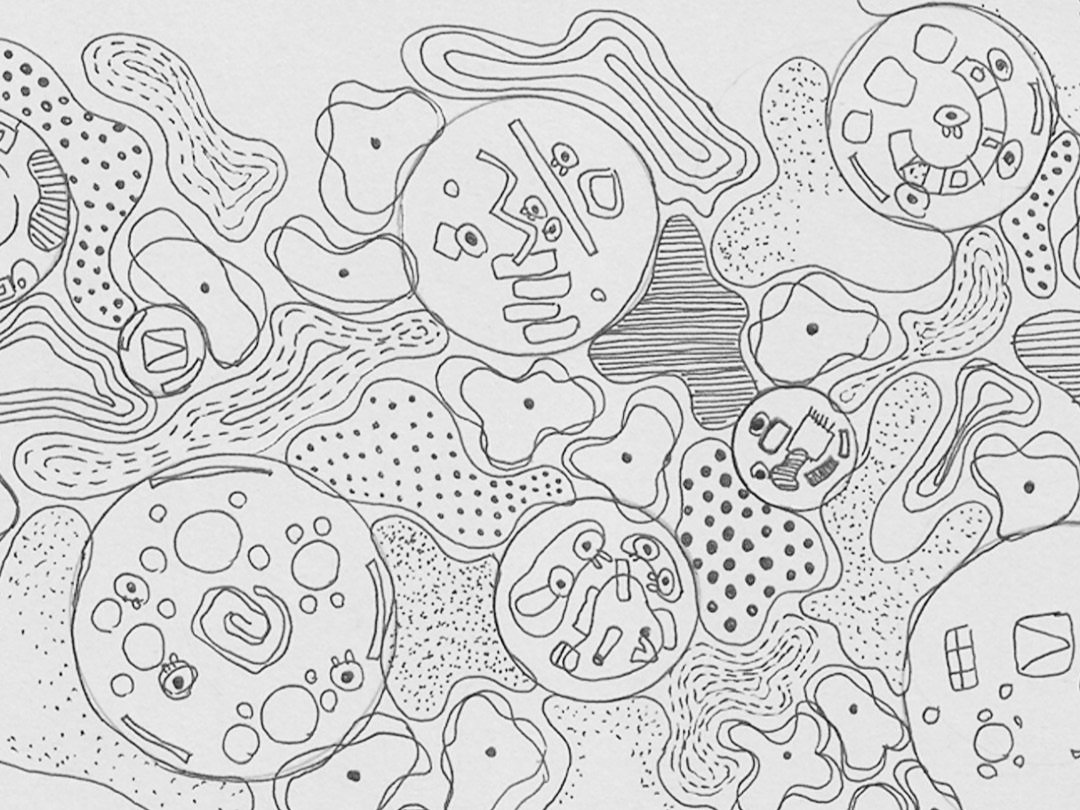Theory of harmony
As architects and urban designers we are “life directors” of spaces where people can live and make live different kind of scenarios. We have a responsibility in our designs to influence healthy, community friendly and life-style friendly environments. While it sounds very dreamy, on the other side of the mirror, architects often work in questionable conditions. We need a new slowness of designing. One that allows us to take our breath. If we can’t breathe while designing, how are we supposed to create healthy environments? In the period from 1920 and 1923, Gertrud Grunow taught students how to stabilise the body, mind and soul through sound, colour and movement.
MAPPING RHYTHM mini-mentoring workshop
Mapping Rhythm is a mini-mentoring workshop through which we follow our everyday life patterns and rhythms and map out possibilities for activism to realise our creative projects within them. It also helps us to gain insight into understanding the physical, psychological, sensory and emotional states in the environments, practices and people in our daily lives. The MAPPING RHYTHM mini-mentoring workshop is made up of 3 parts in which we will use the tools of visual mapping to sprinkle positive resistance, to transform or to add new practices to your creative projects. As you emerge into mapping through drawing, collage or painting, you immerse yourself in practices to deepen the understanding of the relationships between your body, your environment and your practices. You will become more aware of the rhythms of your day to day life.
Micro-communities for diversity
I still believe that cities are places of contradiction, having lived in different cities around the world. They will never be perfect or equal for all. However, they have a tremendous capacity to host spontaneous and permanent micro-communities to create spaces for diversity. The spaces where the micro-community 'happens' are usually thriving social, physical and economic palimpsests. Organising into smaller communities: mini-cells of the city with their own identities, can help people living in the city to find a variety of roles and scenarios beyond the roles of workers or consumers. Creating a safe social space in the city is an antidote to the capitalist city and urbanisation.
Rewarding Care Work
I wrote an Instagram post about care work and asked my community of women in a pool: "How do you think care work could or should be rewarded? Should it be rewarded financially? Should it be rewarded with care? Should it be rewarded differently? Or not at all? Usually care work is characterised as something that comes from the heart and soul, women have an 'inner calling to care', “feel obliged” to support their family members, elders or children. As a result, care work is often seen as a gift, when in fact it costs energy, time and money.
The profession of architecture has been built around many constraints on how to be. We have celebrated linear ways of being, often celebrating the end product, the design and execution of spaces rather than processes of spatial creation and community. We have been complicit in not questioning these linear ways of being. It all 'worked' until you had to do care work.
How (not) to do a job interview as a woman in the architecture industry?
As my eldest daughter's 7th birthday approaches, I am also thinking about how (not) to work in architecture after becoming a mother, something that has also been with me for the past 7 years. Preparing for a job search and interview after becoming a mother is not an easy task. The terrain seems uncertain, you have to come to terms with one of the biggest transformations in a woman's life, you aren’t sure what to expect.
When I started looking for a job, I thought nothing had changed. I can still do it, push myself, work long hours, I will be able to do it all. I will be at home and at work and it will all work out magically. I didn't know that working full-time and being a mother was the hardest job in the world. Sure, there are nurseries and schools and babysitters, but there is a price to pay for the time we spend at work away from our children and the time we spend with our children away from work.
Future Scenarios of Architecting Motherland
When I first became a mother, I didn't realise how many challenges and political issues I would face in my professional life as an architect.
At the beginning, after my maternity leave, I thought, no problem, a piece of cake, I'll come back full-time, overtime - I have to stay on track. Despite having a child, I worked tirelessly, first combining office hours and the construction site. Then in academia, running from the studio to the kindergarten, to give lectures, to give consultations to my students, worried that at some point the phone would ring and it would be the kindergarten telling me that I had to go pick up my child. I thought nothing had changed, I just needed to work a little harder, a little longer, to achieve my dreams and keep my CV on track. I was a full time architect and a full time mother.






